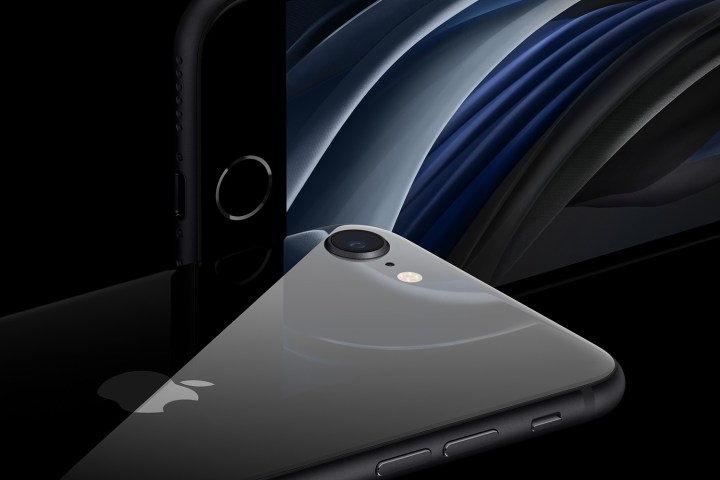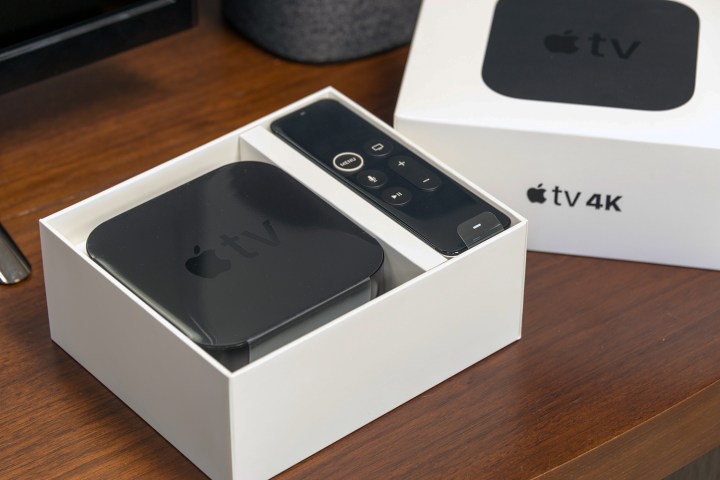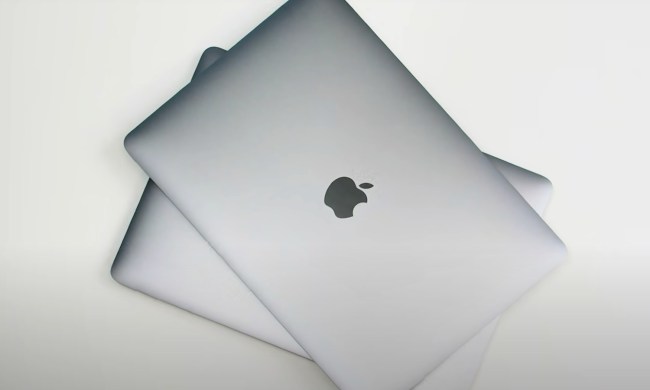Everyone loves a good, glitzy event, and none more so than Apple. But with the coronavirus, officially known as COVID-19, sweeping the globe, Apple’s planned spring event has fallen by the wayside. That doesn’t mean the products won’t keep coming, however — we’ve already seen the iPad Pro and MacBook Air get updates, and there’s plenty more where that came from.
- Where and when will it happen?
- The MacBook Pro 13 becomes the MacBook Pro 14
- The 12-inch MacBook comes back from the dead
- AirTags to keep your items safe
- StudioPods could be an audio masterclass
- Already announced: MacBook Air, iPad Pro
- The new iPhone SE resurrects an old favorite
- Everything else Apple might announce this spring
If the rumor mill is to be believed, we could soon see all-new devices like an updated iPhone SE and Tile-like trackers called AirTags — and there’s even talk of Apple launching a redesigned 14.1-inch MacBook Pro with a new keyboard. Some of these devices are expected to arrive later than others, but a whole heap of them are said to be just around the corner.
Where and when will it happen?

Apple has held an event in March most years since it launched the Apple Watch on March 9, 2015 (2017 is the only year since then that the company skipped the March event).
However, the recent COVID-19 outbreak has derailed the idea of a physical event. According to industry analyst Jon Prosser, Apple was due to hold a March event but canceled it as a precaution to prevent the spread of the virus. Still, Prosser says the products Apple was planning to announce will still launch, just not at a lavish event.
We’ve already seen the new iPad Pro, MacBook Air, and MacBook Pro launch via press release. Here are some of the other products we expect to hear about soon in the coming weeks.
The MacBook Pro 13 becomes the MacBook Pro 14

When Apple released the MacBook Pro 16 in late 2019, it received a near-rapturous reception. We declared it to be the best Mac in years, not because it did anything truly revolutionary, but because its many tweaks addressed almost all the long-standing gripes we’d previously had with Apple’s flagship laptop. The new keyboard felt superb, the speakers were fantastic, and the thinner display bezels were modern and immersive. It even had a redesigned thermal architecture that made throttling a thing of the past. Given the positive reception, Apple would have to be daft not to bring these changes to its smaller MacBook Pro.
The company did just that — in a limited fashion — in early May 2020. While most changes in the new MacBook Pro 13 were minimal, the stellar Magic Keyboard made an appearance, meaning every MacBook now has this keyboard. While that’s a big update in its own right, we expect much more to come from Apple later in 2020.
That’s because reliable industry analyst Ming-Chi Kuo recently released a report that predicted Apple will launch a 14.1-inch MacBook Pro alongside a refreshed MacBook Pro 16 in 2020. The 14.1-inch device is expected to be a redesigned MacBook Pro 13, with thinner bezels to allow for a larger display. Given that the MacBook Pro 16 has only just been released, we’d expect this dual launch to happen sometime in late 2020. That means that we could end up with two updates to the smaller MacBook Pro in 2020 — the small update we got in May, then a much more wide-ranging redesign later in the year. Apple has done something similar before: In 2019, it refreshed the MacBook Pro 15 in the summer, before revamping it as the MacBook Pro 16 in the winter.
There has been plenty of speculation surrounding the next MacBook Pro’s processor. Apple decided to stick with Intel for its May update, and in fact kept its cheaper MacBook Pro 13 models on old 8th-generation processors, something we were not very pleased with. That is perhaps unsurprising given the current global situation and Intel’s well-known problems with meeting Apple’s deadlines.
For the MacBook Pro 14, however, Intel, AMD and even an Apple-made ARM alternative are being floated as the next MacBook Pro’s chip. If Apple is going to switch from Intel to a different processor manufacturer, a completely rethought device like the MacBook Pro 14 would be a good clean slate on which to do it.
As for the price, the new MacBook Pro 13 launched with the same $1,299 price tag as the previous model, which we expected. When Apple brought out the MacBook Pro 16, it kept the price exactly the same as the entry-level MacBook Pro 15 that it replaced, which was impressive given the new features and form factor. Given what Apple did with the MacBook Pro 16, we would hope the MacBook Pro 14 would also keep that $1,299 price tag instead of raising it.
The 12-inch MacBook comes back from the dead

Apple discontinued the 12-inch MacBook in July 2019, seemingly because it just didn’t make sense in an Apple lineup with the revamped MacBook Air. In recent times, however, there has been a growing stream of rumors that Apple is going to resurrect its revolutionary laptop for its latest project: Arm-based processors.
The idea that Apple will soon switch from Intel processors to its own Arm alternatives has been doing the rounds for a while now. But in a recent report from Bloomberg, the following claim was made: “The transition to in-house Apple processor designs would likely begin with a new laptop because the company’s first custom Mac chips won’t be able to rival the performance Intel provides for high-end MacBook Pros, iMacs and the Mac Pro desktop computer.” That rules out the MacBook Pro, but the MacBook Air cannot realistically be described as a “new laptop” seeing as it’s currently for sale. Could this point to a comeback for the 12-inch MacBook?
Before Bloomberg, another leaker made similar claims. Twitter account L0vetodream stated on March 12 that a new 12-inch MacBook, specifically running an Arm processor, was in Apple’s pipeline. L0vetodream has made accurate predictions in the past, including that the iPhone SE would have a centered Apple logo on its rear and 3GB of RAM inside — this prediction was made close to a month before the iPhone SE launched.
We are a little skeptical, however. There is a reason Apple dropped the 12-inch MacBook — the MacBook Air was only marginally larger yet was more powerful and cost less. The choice was obvious. For that reason, we think it’s more likely Apple will debut its Arm processor in the MacBook Air rather than bringing back the 12-inch MacBook, which it only discontinued in mid-2019. Still, it is worth keeping an eye out — Apple is good at surprising people.
AirTags to keep your items safe

In recent years, Apple has branched out from its traditional iPhone-iPad-Mac lineup and added new products to its roster, including services like Apple Arcade and Apple TV+. The latest addition in this recent trend looks to be AirTags, Apple’s Tile-like tracking device to help you find your lost items.
Unlike many Apple rumors, which are based on intangible supply chain whispers, there seems to be solid evidence for the existence of AirTags. Code in iOS 13 contained references to the tracking product, indicating it would work with Apple’s Find My app, which would let you press a button to have the AirTags emit a sound. Code for the upcoming iOS 14 software release also hints at AirTags, suggesting they will be able to be set up in bulk and will have user-replaceable batteries. AirTags may even work with augmented reality, whereby a red balloon would appear on your iPhone screen to indicate the position of the lost item.
The AirTags name was first spotted in iOS 13.2 code by 9to5Mac, and received another boost when the name was supposedly included in an official Apple support video, lending further credence to the idea that Apple is indeed working on a new item tracker product. While they were at first expected to launch at Apple’s September 2019 event, that never happened, leaving spring 2020 as a strong possibility for their debut.
StudioPods could be an audio masterclass

Apple has long been rumored to be working on its own brand of over-ear headphones. While the company owns Beats, it doesn’t sell any over-ear cans bearing the Apple logo. Yet with it expanding more into audio in recent years, first with AirPods, then HomePod, then most recently with AirPods Pro, now could be the time for the so-called StudioPods to make an appearance.
The evidence looks good. We earlier mentioned how a leak from Target’s stock system pointed towards an upcoming iPhone SE — well, that same leak hinted at a new pair of Apple headphones, too. Listed as “Apple AirPods (X Generation)” and priced at $399.99, these are almost certainly the rumored over-ear headphones.
Why? Well, it’s only been a couple of months since the $250 AirPods Pro launched, and these were framed as the high-end version of Apple’s AirPods (hence the “Pro” moniker). It’s unlikely another, even higher-end version of AirPods are in the works, so it’s highly likely this leak points towards some other audio product — namely, the StudioPods.
Given the headline features Apple brought to the AirPods Pro — highly accurate audio and noise cancellation capabilities — we’d expect similar specs in the StudioPods. After all, with a name like that, Apple is apparently framing these as high-end headphones for use in a studio. The company has always been willing to launch expensive products if it can make them the best in the industry, so expect a similar situation with the StudioPods.
Added to the feature list is the possibility of magnetically swappable parts. This rumor comes via Bloomberg, which states that Apple’s headphones could let you customize the ear pads and headband padding after you’ve bought them. There will apparently be two versions available — a premium leather option and one aimed at fitness users — and you’ll be able to swap the parts between either as you please.
As for a release date, the latest rumor is that Apple may hold the StudioPods, which could be called AirPods (X Generation), for a release in June at Apple’s WWDC.
Already announced: MacBook Air, iPad Pro

In mid-March, Apple launched a new iPad Pro featuring an A12Z Bionic chip (the first time an Apple A-series processor has had the Z suffix), a new Magic Keyboard case with trackpad, a LiDAR scanner, and a triple-lens camera setup like that on the latest iPhones.
Perhaps one of the most interesting elements of the new iPad, though, is its Magic Keyboard case. It combines the Magic Keyboard from the MacBook Pro 16 and a trackpad, the first time either has ever appeared with the iPad Pro. Apple says it implemented cursor support in iPadOS in a special way rather than just porting over the MacOS system. The user can use a small white dot on-screen to select elements, edit text and navigate web pages.
It won’t function the same way as a Mac, but we do know it can be combined with Apple’s excellent trackpad gestures, so we’ll have to see how well it works in practice. Its price tag is hard to swallow, though — $299 for the 11-inch model and an eye-watering $349 for the 12.9-inch version. Add that to the top-end iPad Pro and you start paying more than a MacBook Pro.

Alongside the new iPad Pro, Apple also launched an update of the MacBook Air. It features a number of important updates, including a new keyboard, a lower price, and faster processors. The keyboard is the same Magic Keyboard that was featured in the 16-inch MacBook Pro, with a millimeter of travel and the inverted “T” arrow keys.
On the performance front, the MacBook Air now comes with 10th-gen Ice Lake processors from Intel. They still start at the dual-core Core i3, but now offer quad-core options for Core i5 and Core i7. These quad-core processors offer significantly better performance in multitasking and in heavier applications. All the models come with Iris Plus, Intel’s new and improved integrated graphics.
Lastly, the new MacBook Air switches up the configurations and pricing. The base model now starts at $999, which includes the Core i3, 8GB of RAM, and 256GB of SSD storage. That’s double the storage of previous iterations. You can now configure it up to 2TB of storage and 16GB of memory, though you’ll pay handsomely for that.
The new iPhone SE resurrects an old favorite

The original iPhone SE was a surprise hit, offering as it did a more compact screen than Apple’s other iPhones without compromising on performance. It addressed a gap in the market for a small-screen iPhone that had gone unfulfilled since Apple launched the larger iPhone 6 in 2014.
Ever since Apple discontinued the iPhone SE in 2017, there have been rumors that it’s been working on a successor. On April 15, 2020, those rumors proved true as Apple unveiled the new iPhone SE.
This comes in a similar form to the iPhone 8 from 2017, but there’s nothing out of date about its internals. It boasts the A13 Bionic chip that’s also found in the iPhone 11, 11 Pro and 11 Pro Max, and it’s an incredibly performant processor. In our iPhone 11 Pro review, for example, it recorded the fastest AnTuTu benchmark score we’d ever seen in a smartphone. Having that much power in the iPhone SE is a great piece of news.
It’s made even better by the iPhone SE’s price. It starts at $399, a full $300 less than the iPhone 11, Apple’s previously cheapest iPhone in its current lineup. For under $400 you get the A13 Bionic chip and 64GB of storage. The 128GB version costs $449, while the 256GB edition is $549. You also get your choice of three colors: white, black or (Product)Red.
What else do you get for your money? There’s a 4.7-inch Retina HD display with a 1334 x 750-pixel resolution at 326 ppi (the same pixel density as the iPhone 11). This display uses the P3 wide color gamut and incorporates True Tone, Apple’s tech that dynamically adjusts the screen’s white balance based on the ambient light temperature. On the back is a single 12MP camera, and there’s a 7MP lens on the front. Apple also says the iPhone SE has an IP67 rating, which means it’s splash, water and dust resistant up to a maximum depth of 1 meter for up to 30 minutes.
Elsewhere, there’s a physical Home button that works with Touch ID. That means there’s no Face ID; on the one hand that means there’s no notch, but on the other hand it also means you have to make do with much thicker bezels than Apple’s other current iPhones. Still, that’s a small sacrifice for everything else you get at this price.
Finally, Apple says the battery life “lasts about the same as iPhone 8,” quoting up to 13 hours for local video playback, up to 8 hours for streamed video playback, and up to 40 hours for audio playback. The iPhone SE charges either wirelessly or via its Lightning port, which Apple says can juice it up to 50% in 30 minutes with an 18W adapter (which is sold separately; the iPhone SE only has a 5W adapter in the box).
Everything else Apple might announce this spring

Despite not having a major event to focus on, Apple still has plenty more to announce in spring 2020. Several other products have been slated; if everything rumored makes an appearance, it could be one of the most jam-packed Apple launch seasons in recent memory.
For one thing, there is much talk of a new Apple TV box coming soon. Code in the tvOS 13.4 beta was recently spotted by 9to5Mac that hints at a new Apple TV, with a new device codenamed T1125 nestled among the lines of code. Apple’s current Apple TV models sport the product codes J105A and J42D, suggesting that T1125 is something entirely new. 9to5Mac also noticed references to a new Apple TV Remote and workout app in iOS 14 code. The most recent Apple TV was announced in September 2017, over two years ago, meaning a new version could be on the horizon.
Elsewhere, another expected announcement concerns software, not hardware. In another case of new info being uncovered in iOS beta code (this time for iOS 13.4), eagle-eyed analysts have spotted references to something called CarKey.
What is this exactly? Well, it looks like it could be a new feature that allows your iPhone or Apple Watch to remotely unlock your car, provided your vehicle has an NFC reader. Your car’s details will be stored in the Wallet app, according to MacRumors, and you will able to hold your iPhone or Watch near your car’s NFC reader, authenticate with Face ID, then unlock your car. The Apple Watch can already unlock your Mac when you sit down at your desk, but this would be a step above in terms of functionality.
According to the code, you may even be able to temporarily share access to your car with trusted people using the Messages app, then revoke access once they’re done. Its appearance in iOS 13.4 beta code turned out to be something of a red herring — iOS 13.4 was recently released but CarKey was not activated, so it looks like we will have to wait a little longer for this feature to launch.



